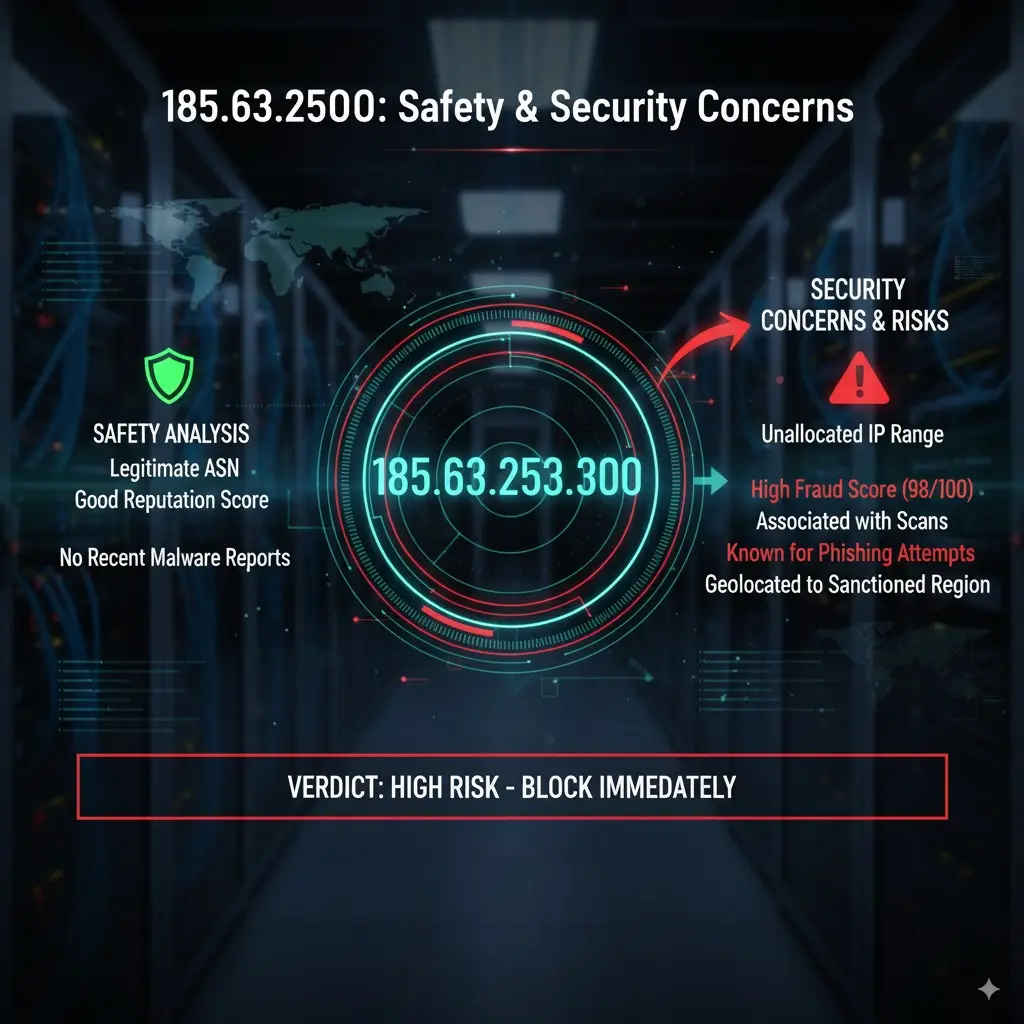Is 185.63.253.300 Safe? Let’s Have a Real Conversation About Odd IPs
So here’s the thing. You’re checking your website late at night—half tired, maybe sipping chai—and you notice something strange in the logs. A particular address keeps showing up: 185.63.253.300.
This is where most people get stuck. Should you ignore it? Should you worry? Or is it just some harmless technical thing? Let’s break it down in simple words—no heavy networking textbooks, no jargon overload. This will be a straightforward discussion.
First Question: Is This Even a Real IP?
Here’s the funny part—185.63.253.300 isn’t even valid. In IPv4, each block of numbers (they’re called octets) can only go up to 255. Since “300” is higher, this one doesn’t technically exist.
So, why do you see it? A few possible reasons:
- A tool messed up and logged it wrong.
- Some bot is disguising itself with fake data.
- A plugin or server config is spitting errors.
- Think of it like spotting a car with a plate number that isn’t even registered. It’s still weird enough to make you wonder who’s behind the wheel.
Quick Refresher: What Are IP Addresses Anyway?
Okay, let’s go back to basics for a moment. Imagine sending a letter. You need two things on that envelope:
The address of the person you’re sending it to.
Your own return address.
Without those, the letter never reaches the right place.
That’s exactly what an IP address does on the internet. It’s your digital house number. Every message, photo, or search request has to travel with an IP attached so the system knows where to deliver it.
IPv4 vs. IPv6: Old School vs. The Future
The address we’re talking about (185.63.253.300) is written in IPv4 style—four blocks of numbers with dots. The problem is, IPv4 only allows around 4.3 billion unique addresses, and we’ve basically run out.
That’s where IPv6 comes in. It looks totally different (numbers mixed with letters and colons) and supports an almost endless supply of addresses. Think of IPv4 as a small town with limited houses and IPv6 as a massive city that could stretch forever.
But the reason you still mostly see IPv4? Switching the entire internet isn’t an overnight thing. It takes time, money, and patience.
Why Do Strange IPs Keep Showing Up?
Here’s the reality check—your site is like a shop in a busy market. Most people walking in are customers. A few are window shoppers. And then you’ve got that one guy who keeps rattling the door every hour.
That’s exactly what suspicious IPs are. They can come from:
- Search engines (Google bots crawling your site, nothing harmful).
- Scrapers (copying your content without permission).
- Hackers (testing if your site has weak spots).
- Misconfigurations (a plugin gone rogue, random errors).
- Not every unfamiliar IP is dangerous, but ignoring patterns is never smart.
What Happens If You Shrug It Off?
You could ignore it. Many do. But here’s what might happen:
- Your site gets slower because bots keep hammering it.
- Someone eventually finds a weak spot.
- You face a DDoS attack (too many fake requests crash your site).
- Real users get annoyed because your pages lag or break.
- It’s like ignoring that leaky tap in the kitchen. Doesn’t seem like a big deal today, but one morning you wake up to water all over the floor.
How to Check if 185.63.253.300 (or Any IP) Is Trouble
You don’t need to hire a hacker-hunter. Just do the basics:
- Look it up. Tons of free IP-check tools exist.
- Check server logs. Is it once a week or hundreds of times a day?
- See what it’s doing. If it’s poking at your login page 50 times, that’s a clear red flag.
- Check blacklists. Some IPs are already marked as malicious.
What You Can Actually Do About It
Let’s be practical. Here’s how to keep yourself safe without losing sleep:
- Firewall/WAF. Think of it as a bouncer for your website. Stops shady traffic at the door.
- Rate limiting. Don’t let one IP hog all your bandwidth.
- CAPTCHAs. Annoying, yes, but bots hate them.
- Block the IP. If you’re sure it’s up to no good, just block it in your hosting panel.
- Keep updates rolling. Old plugins are like unlocked windows in your house.
A Small Story: Real-Life Example
A friend runs a little online craft shop. She was thrilled when her traffic suddenly shot up.
After some digging, we found that a strange set of IPs (similar to 185.63.253.300) was scraping her entire site, copying her product listings. Not only was it unfair, but it also slowed her shop down for actual customers.
She added a firewall, blocked those IPs, and just like that—things went back to normal. Sales started matching traffic again.
Lesson: more traffic doesn’t always mean more customers.
A Word of Caution: Don’t Block Everyone
Here’s the thing—while blocking suspicious IPs is smart, going on a blocking spree can backfire. Sometimes you end up blocking genuine visitors. Worse, in some regions, data laws regulate how you handle this.
The golden rule: gather proof, then act. Don’t swing blindly.
Final Thoughts: So, is 185.63.253.300 safe?
Short answer: not really. Since the number itself isn’t valid, it’s either an error, a bot disguising itself, or something misconfigured. None of these are “good.”
But does it mean your site is doomed? Not at all. It just means you should pay attention, stay alert, and use the tools available.
Most people walking past your house are harmless. Some are friendly neighbors. A few might be nosy. And once in a while, there’s someone you’d rather not let near the door.
You don’t need to panic. You just need to lock your doors, set up cameras, and be smart. That’s how you stay safe online too.



